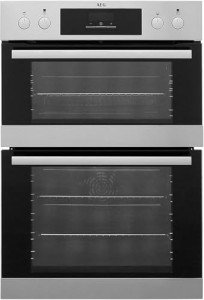The Comprehensive Guide to Built-In Ovens
Intro
Built-in ovens are a staple in modern kitchens, combining sophistication with functionality. They provide a smooth aesthetic and effective cooking capabilities, making them a preferred option for house owners and culinary lovers alike. visit my homepage into the advantages of built-in ovens, their numerous types, crucial functions to think about, setup ideas, and maintenance advice, together with regularly asked concerns.
Benefits of Built-In Ovens
Built-in ovens featured a range of benefits that contribute to their popularity. Here are some key advantages:
- Space-Saving Design: Built-in ovens are designed to fit flawlessly into cabinets, permitting a more organized and space-efficient kitchen design.
- Aesthetic Appeal: They provide a smooth and modern look that can boost the overall style of the kitchen.
- Improved Functionality: Built-in ovens frequently feature innovative features and technologies that support numerous cooking techniques.
- Boosted Cooking Experience: Many built-in designs include self-cleaning functions, temperature level probes, and programmable settings, enhancing the cooking experience.
- Increased Property Value: A properly designed kitchen with built-in appliances can boost the value of a home.
Kinds Of Built-In Ovens
Built-in ovens been available in numerous types, each developed to meet various cooking preferences and requirements. Here are the main types:
| Type of Built-In Oven | Description |
|---|---|
| Single Oven | A single, standalone oven for standard baking and roasting. |
| Double Oven | Combines 2 ovens in one unit, permitting multiple meals to cook at various temperature levels. |
| Wall Oven | Set up in the wall, releasing up counter area, suitable for small kitchens. |
| Convection Oven | Utilizes fans to flow hot air for even cooking, improving the outcomes of baked products. |
| Steam Oven | Makes use of steam for healthier cooking alternatives, maintaining nutrients in food. |
Secret Features to Consider
When choosing a built-in oven, a number of features can impact performance and use. Here are some important functions to bear in mind:
Cooking Modes
- Bake: Traditional baking with bottom heat.
- Broil: Top heat cooking appropriate for browning and crisping.
- Convection: Circulates hot air for even cooking.
- Steam: Uses steam for much healthier cooking alternatives.
Size and Capacity
- Requirement sizes usually range from 24 to 30 inches large.
- Think about the internal capacity-- it can range from 3 to 6 cubic feet, permitting different dish sizes.
Controls and Smart Features
- Touchscreen Controls: Easy shows and adjustments.
- Smart Technology: Connectivity features enable remote monitoring and control via smart device applications.
Energy Efficiency
- Search for designs with ENERGY STAR ratings, suggesting lower energy consumption.
Safety Features
- Functions like auto shut-off and child locks enhance safety throughout operation.
Setup Tips
Installing a built-in oven might require professional support, but here are some general suggestions to bear in mind:
- Choose the Right Location: Ensure there's enough space in your cabinetry for setup, remembering ventilation requirements.
- Electrical Requirements: Check that your kitchen's electrical wiring satisfies the oven's power requirements, especially for electric designs.
- Level the Oven: Ensure the oven is level to promote even cooking.
- Protect the Oven: Attach it firmly to the cabinetry to avoid motion throughout usage.
Upkeep Advice
Regular upkeep is essential for the durability and effectiveness of a built-in oven. Here's how to keep it in top shape:
- Regular Cleaning: Wipe down surfaces after each use and perform deep cleaning regularly.
- Inspect Seals: Inspect door seals for wear and ensure they keep an airtight fit to enhance energy performance.
- Adjust Temperature: If food consistently comes out overcooked or undercooked, think about recalibrating the oven's temperature settings.
- Professional Servicing: Schedule yearly check-ups with an experienced service technician to keep optimal efficiency.
Frequently asked questions
What is the difference between a built-in oven and a freestanding oven?
Built-in ovens are designed to be set up within kitchen cabinetry, offering a smooth look. On the other hand, freestanding ovens are standalone units that usually come with their own cooktop.
Are built-in ovens more pricey than freestanding designs?
Usually, built-in ovens can be more pricey due to the added setup costs and advanced features. However, prices vary extensively based on brand name, size, and functionalities.
Can I set up a built-in oven myself?
While it is possible to set up a built-in oven yourself, it is advised to employ an expert to make sure appropriate setup, specifically if modifications to cabinets or electrical work are required.
How frequently should I clean my built-in oven?
It is a good idea to clean your built-in oven regularly after heavy use. For visit this web page link , utilize the self-cleaning function if readily available or occasionally perform manual cleaning to prevent accumulation.
Built-in ovens are a valuable addition to any kitchen, using both aesthetic appeal and advanced cooking abilities. By understanding Double oven & hobs electric built in , features, setup, and upkeep requirements, house owners can make informed choices that enhance their cooking experience and increase the general worth of their homes. As kitchen designs continue to progress, built-in ovens will likely stay a prominent choice for modern-day homes.

